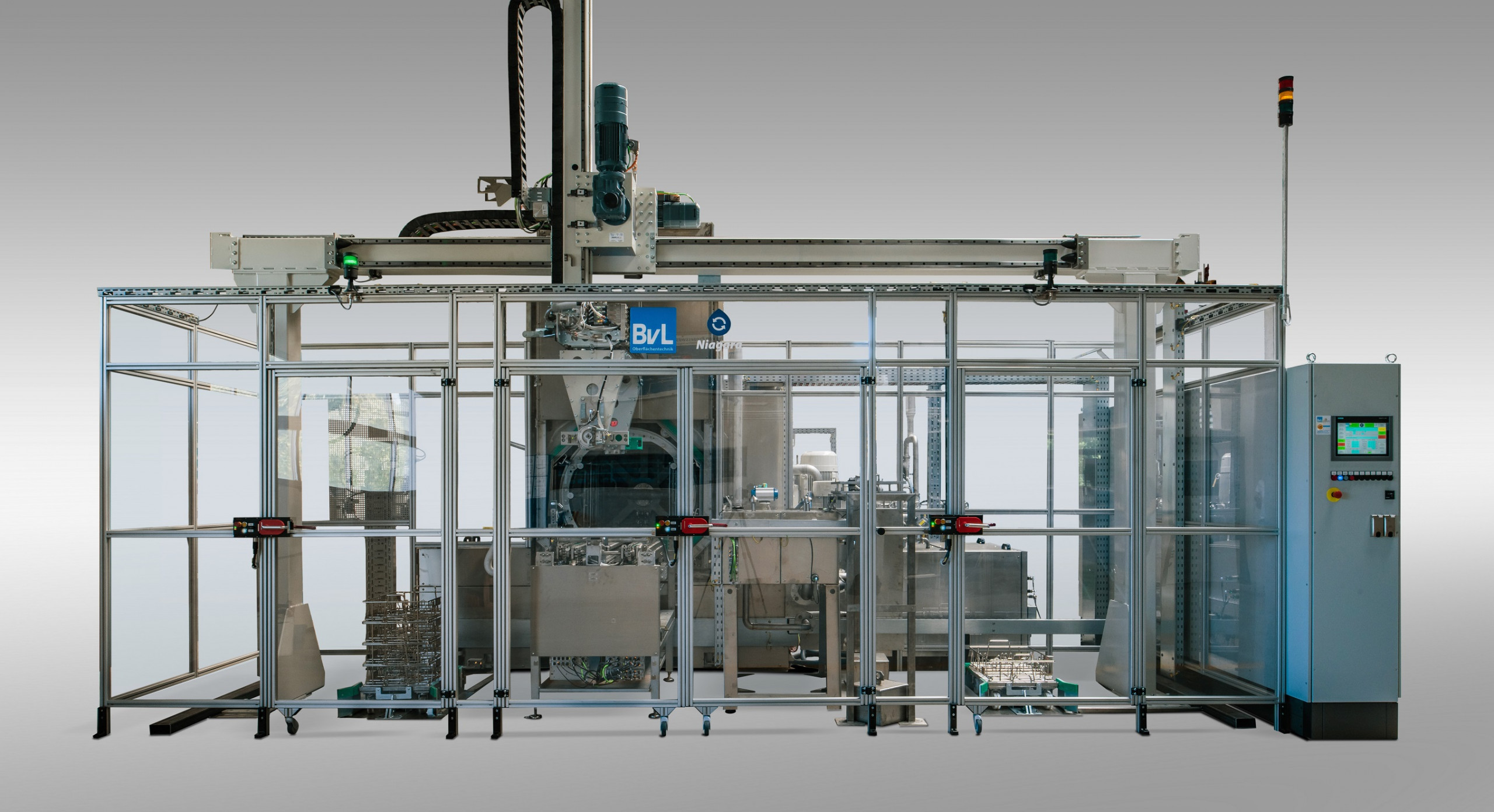
Several automotive suppliers rely on decentralized cleaning in their production. In this way, they reduce staff time and costs. Because such solutions do not have to be complex and expensive.
The process is the focus – also in the spatial sense. In a machining center, for example, planetary carriers made of gray cast iron are first machined. This is followed by cleaning. To reduce handling times, a production cell was designed in which the machining center and cleaning system are operated by a robot.

© BvL
The operator only brings the floor roller into the production cell and starts the process. Then he can pursue other work throughout his shift. Now a robot takes over the handling. The robot takes a component from the basket and places it in the processing machine. A treatment time of twelve minutes per component is defined here. The robot then transfers the machined or ground component to the cleaning system and places it back into an empty basket after the cleaning process has been completed.
One basket is equipped with eight components. The floor roller is equipped with five baskets. With the processing time of twelve minutes, 40 components can thus be processed within an eight-hour shift without employee intervention.
At first glance, the BvL cleaning system “OceanRW” is a classic, small single-tank cleaning system that works on the turntable principle. The cleaning material is placed on top of the workpiece carrier and rotates around the horizontal axis during the process. The special nozzle frame, which is individually adapted to the component, ensures thorough cleaning. Drying is also performed by individually designed nozzles in rotary mode.
In this intermediate cleaning, the cleanliness requirements were rather moderate. After cleaning, the parts should be free of visible transport and production residues, such as chips, blasting material or casting sand.
“It is important to us that we design the perfect cleaning system for the customer,” explains Bernd Menke, sales manager at BvL Oberflächentechnik. “And that encompasses much more than just looking at the cleaning product. The entire process, logistics and also automation play just as big a role as operator satisfaction,” says Menke. “In this case, the perfect process could be mapped with a small cleaning system. This makes it possible to have an optimal solution that is not too complex and not too expensive – and at the same time relieves employees in production.” Menke also emphasizes, however, that “BvL can implement very diverse solutions and integrate them into the customer’s respective production line. “Our consulting and expertise benefits from very diverse experience. But our software engineers have also already connected the most interesting interfaces and the most diverse plant types,” he explains.
Many manufacturing companies are currently experiencing a massive shortage of skilled workers in production. Production cells with workpiece stock for one shift can be a sensible way of deploying personnel in an appreciative and efficient manner. It is important here for efficiency in the process and also employee satisfaction to integrate both machining and cleaning. The components are then optimally prepared for the next production step.
Web:
www.bvl-group.de

